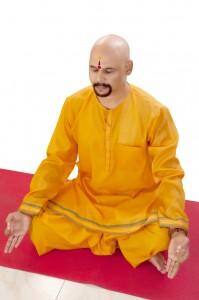If you have been stressed lately, you might have noticed that you are becoming a bit more irritable, impatient and unable to concentrate — it’s time to de-stress. While, there are a number of ways to let go of pent-up stress, meditation is something that can really help you let go and simply relax; all in the comfort of your home. It not only helps you relax your mind, but it also make you less aggressive, more confident, poised, tolerant, healthy, and helps you concentrate so you can make better decisions.

Contrary to what you might believe, meditation does not involve simply sitting for hours on end. There are numerous methods of practising it. While some forms of meditate may be easier than the others, the method you choose depends not only on your physical health, but also your profession, nature and the amount of time you have. This post tells us about the various methods of meditation and how they can help you beat stress.
Before you start:
The first step to a good meditative experience is to have a separate space to yourself, specially meant for meditation. Decorate your meditation room with inspiring and calming pictures — you may choose to use one of a great saint, an ornate picture of your favorite deity or simply something that you find soothing. Another important factor is to clean your hands, legs and face before you start meditating, this helps clean up your body and makes it more receptive to positive energies. While any time is good to meditate, try doing so between five to seven in the morning and six to eight in the evening.
Meditation type#1: Om mantra dhyanam(தியானம்)
Sit in a comfortable meditative pose with your eyes gently closed. Keep your back straight and stretched with your shoulders relaxed. Recite the ‘Om Mantra’ silently with full attention, maintaining a focus on the rhythmic flow of the mantra. Practice this for a minimum for 10 minutes every day and slowly increase the time as and when you feel more comfortable.
Meditation type#2: Jyoti dhyanam(ஜோதி தியானம்)
Not only does this type of meditation help reduce stress and anxiety, but it is also a part of the ‘tratak shatkarma’, an essential yoga kriyathat helps improve eyesight. To do this type of meditation, sit in a comfortable meditative pose with your eyes open. Keep a burning candle or lamp four feet from you at the level of your eyes. To start, just look away for a while then concentrate on the flame for as long as you can, without blinking. After some time close your eyes and mentally envision the flame. Try to focus on the mental image of the flame for as long as you can. Practising this for at least 10 to 15 minutes on a daily basis is extremely beneficial. Do it daily for a minimum of 10 to 15 minutes.
Meditation type#3: Walking dhyanam
Meditation type#3: Walking dhyanam
When you feel agitated or restless, walk for a minimum for 10 to 15 minutes. It can be anywhere, down a corridor or through a park. Try to harmonize your steps with your breathing. The repetitive motion of your legs and arms help you to enter a meditative state which relieves anxiety and anger.
Meditation type#4: Image dhyanam
Meditation type#4: Image dhyanam
Place a calming picture in front of you. You may choose a picture of God or simply your favorite painting. Now, sit in the meditative posture and concentrate gently on the picture till your eyes start to water. Then close your eyes and visualize the picture. Once you are comfortable doing this once, you can repeat the process.
Meditation type#5: Memory dhyanam
Read two to three pages of a book. Then close the book and try to visualise or remember what you just read. Focus on the words on the page and allow your mind to associate, classify, group, combine and compare. This type of meditation is great to help improve your memory and ability to recall details.
Meditation type#6: Dhyanam on thoughts
Sit comfortably in any meditative posture and keep your back upright as you relax your neck and shoulders. Close your eyes gently, concentrate on whatever thoughts come to your mind. Without any restrictions, let them come and go. After some time you’ll notice that the thoughts disappear and your mind becomes completely quite and calm. Stay in this meditative state for as long as you feel comfortable. You can start with practising this for a short period of time and then increase it to about 15-20 minutes in a day.
Meditation type#7: Nad dhyanam
Sit in your favorite asana. Close your eyes and your ears with your thumb and forefinger. Try to hear the innate sound of your body known as the ‘anahat sound’ (mystic sound). After practising this for about two to three days, you will hear various kinds of sounds such as that of a flute, thunder storm or humming of a bee. This might be a bit unsettling in the beginning but allow your mind to overcome this. After a while you will find that you no more hear sounds and your mind is calm.
Meditation type#8: Chakra dhyanam
This is an advanced meditative practice in which your concentration is focused on the various energy centers or chakras. There are 7 chakras in human body and they correspond to the different endocrine glands in our body. To do this type of meditation, pay attention to each chakra for as long as you can. Imagine you are breathing in and out from the chakra you are focusing on. Try this method for about 10 to 15 minutes every day. It is believed that perception of these psychic centers will help in the development of the endocrine glands.